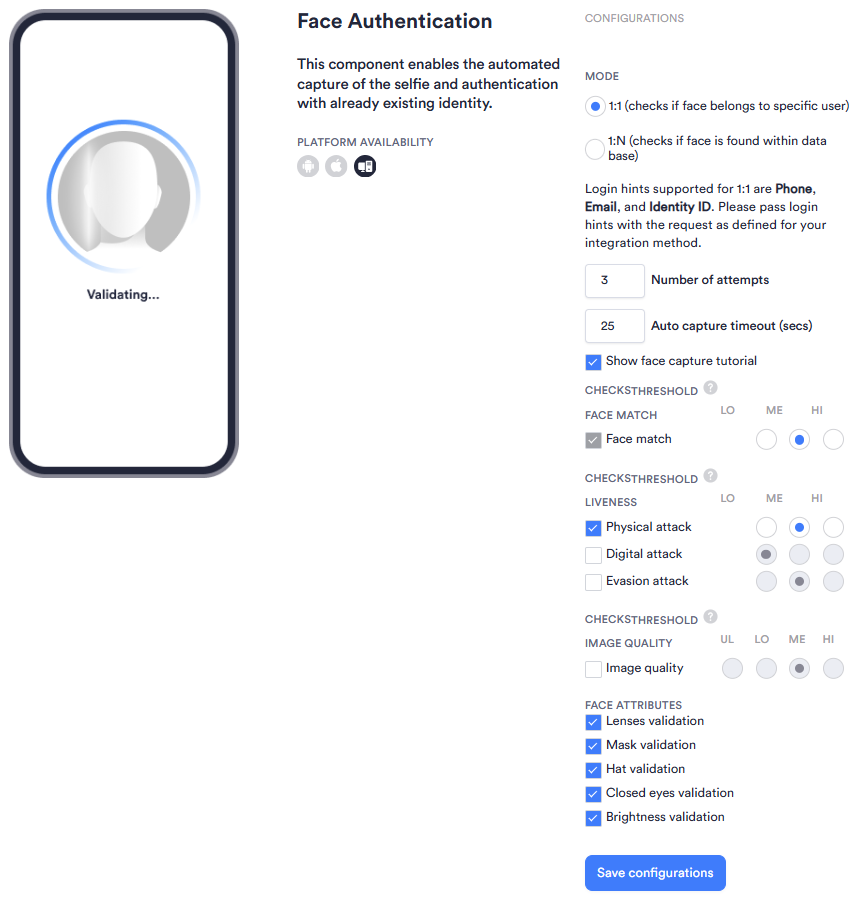Face Authentication
The Face Authentication module enables automated capture of a selfie and authentication with an existing Identity. The authentication can be run in two modes - 1:1 and 1:N.
Platform support: Web, native SDKs, hybrid SDKs, webSDK
Configuration
After adding the Face Authentication module to your Workflow, there are several settings you can configure based on your needs. Click the module in the Workflow to open the configuration panel, adjust the settings as needed, then click Save configurations.

Refer to the table below for details about each setting.
Setting | Description |
|---|---|
Mode | Determines the mode of comparison. Select one:
Default value: 1:1 |
Number of attempts | The maximum number of auto capture attempts Incode will make. As soon as there is a successful attempt, the module ends. Enter a number. Default value: 3 |
Auto capture timout (secs) | The maximum number of seconds Incode will attempt to auto capture the selfie. After which time, manual capture is required. Enter a number of seconds. Default value: 25 |
Show face capture tutorial | Controls whether the user sees a tutorial on how to capture the best possible selfie. Selected by default. |
Face Match Threshold | Controls the severity on the model that does the face matching process. A high threshold is better for security, but a low threshold is better for conversions. Select one:
Default value: Me Note that this setting cannot be deselected as it is a crucial part of the authentication process. |
Liveness Threshold | Controls the severity on the model that performs liveness checks. A high threshold is better for security, but a low threshold is better for conversions. There are three separate Liveness checks:
|
Image Quality Threshold | Checks for the quality of the captured selfie. A high threshold is better for security, but a low threshold is better for conversions. Select one:
Default value: Me |
Lenses validation | In the Face Attributes section. Controls whether the system checks if the user is wearing lenses or sunglasses in the selfie. Selected by default. |
Mask validation | In the Face Attributes section. Controls whether the system checks if the user is wearing a mask in the selfie. Selected by default. |
Hat validation | In the Face Attributes section. Controls whether the system checks if the user is wearing a hat in the selfie. Selected by default. |
Closed eyes validation | In the Face Attributes section. Controls whether the system checks if the user's eyes are closed in the selfie. Selected by default. |
Brightness validation | In the Face Attributes section. Controls whether the system checks for minimum necessary brightness of the image. Selected by default. |
Scoring
Every authentication attempt gets its own score.
When Liveness is OFF
- The numerical score represents the face recognition/match score.
- The face attributes have binary impact on the scoring - if any fail, the attempt fails
When Liveness is ON
- The numerical score represents combination face recognition/match score and Liveness score.
- The face attributes have binary impact on the scoring - if any fail, the attempt fails
Updated 29 days ago
